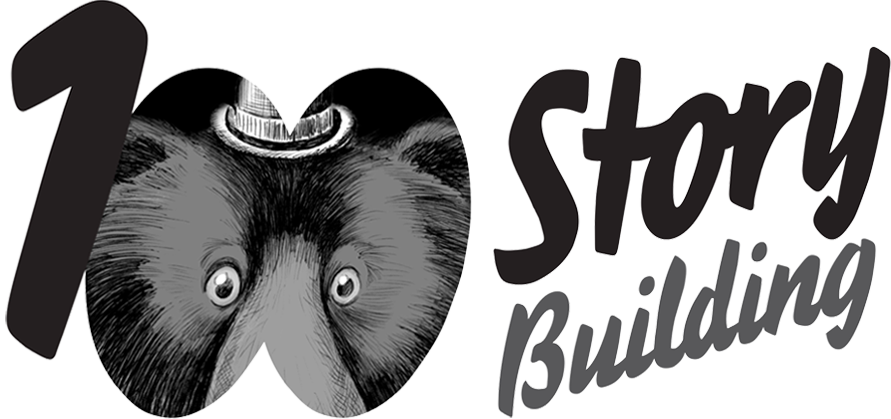Co-Designing a Story Hub
Article by Jessica Tran
Sunshine Primary Students work from their Story Hub
Through our Story Hubs program, we work with schools to support students as experts in their learning and teachers as confident facilitators of student ideas and voices. One of the key ways we do this is through co-designing specific components of the program with teachers and students.
This week our cohort of schools start co-designing the most visible part of Story Hubs: their creative space. But what do we mean by co-design, and how do we facilitate it at 100 Story Building?
For us, co-design proceeds from principles we hold in our work around positioning students as experts of their own stories, and a commitment to amplifying young people’s voices. There is no one way to practice co-design: it is about doing things with not for people, where they get to make decisions about what happens, and have real choices about what comes next. KA McKercher created an excellent resource called Beyond Sticky Notes that delves into the co-design process if you are interested in reading further about it.
To co-design the Story Hubs, we start with a small group of up to 20 students, who become the design team for their school’s Story Hub. We use creative and participatory activities to bring students together around the goal of designing a creative space for their schools. This creative space is one that helps students (and teachers) feel curious and comfortable to try new things with their literacy teaching and learning. It’s a Story Hub, because it’s particularly meant to support students to write and tell any kind of story they can think of or imagine. It’s also a place where everyone who enters it can make and share stories together.
The student co-design team gathers up ideas from their peers about what they need to feel comfortable and confident about taking creative risks in their learning, and then analyses and themes the ideas into a storyline(s). We think of this as the exploration and ideas stage. We then invite artists into the co-design to help shape the concept into a final design. Throughout this process, we facilitate the sessions so that decisions are made with students, not for them. This involves supporting students to express their ideas, and negotiate with others about what their Story Hub will be. It also means we pay attention to how we facilitate others who are part of the process - artists, teachers, families - so that decision-making power remains as much as practically possible with students.
Whittington Primary Students and Teachers share ideas for their Story Hub.
This way of making a Story Hubs is grounded in the way we think about creativity as being a collective experience that we all share in, through relating to others in new and different ways, by and that includes the things and environment around us. Additionally, by giving students the opportunity to affect the school space, we can embed their voice and values in the environment, and draw on that to support their creativity.
When students participate in the design of the space themselves, their voice and values are embedded into the physical space, reinforcing student ownership, involvement and participation in the learning process.
(Kallio, J. (2017). “The built pedagogy of K-12 personalized learning programs as designed opportunities for student voice and choice,” in Transitions: Inhabiting Innovative Learning Environments.)
When students co-design a Story Hub, they see their input, ideas and decisions being put into action. This process increases students’ ownership over the space, which allows them to become creative experts in the Story Hub right from the start. In turn, this helps foster student agency, and encourages them to take responsibility for their creative learning because their voice and values are being celebrated and embodied in the environment that surrounds them.
It also helps teachers adopt a slightly different mindset when they are in the Story Hub: in the two years following the space build, we work alongside teachers to build their capacity in creative facilitation. This allows them to step slightly outside the role of ‘expert teacher,’ and take on a more collaborative and creative facilitative role with students, which helps build creative safety and increase students’ confidence, engagement, and sense of belonging.
What a Story Hub aims to be is a space that materially and sensorily opens teachers and students to thinking about and doing things differently in their everyday learning. This is important because there are many pressures schools face to standardise teaching and learning in classrooms and, while there are important reasons for and positive outcomes from some standardisation efforts, creativity thrives on - and is defined by - difference. And this difference already exists in the schools. It is this difference that the co-design process values and enfolds into the creation of the Story Hub.


